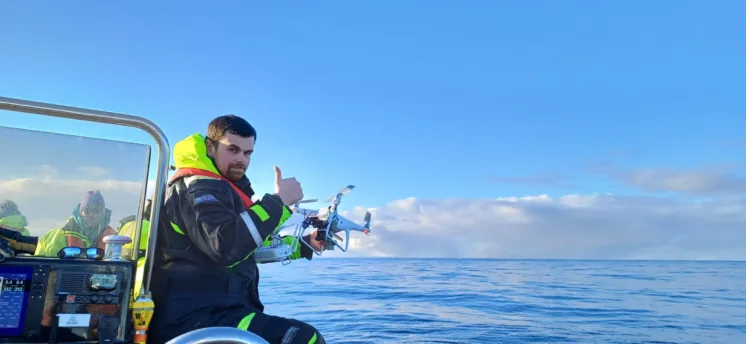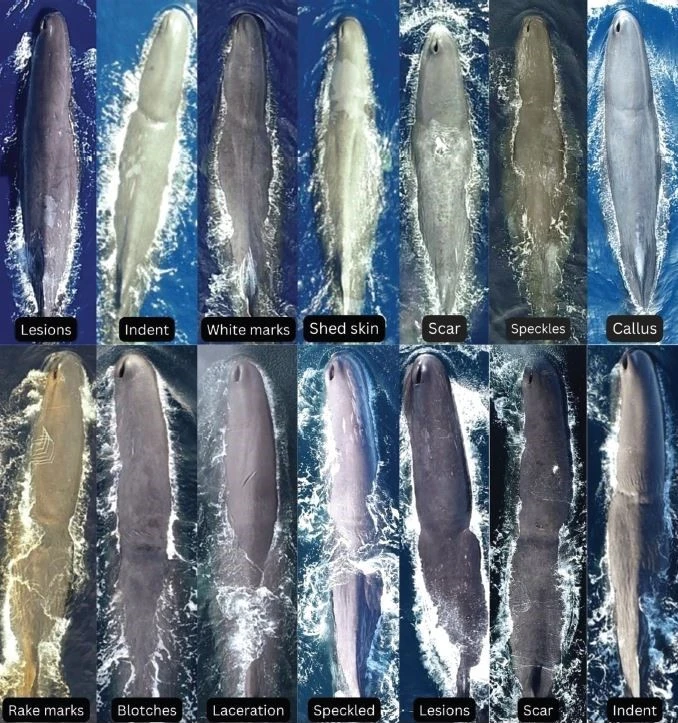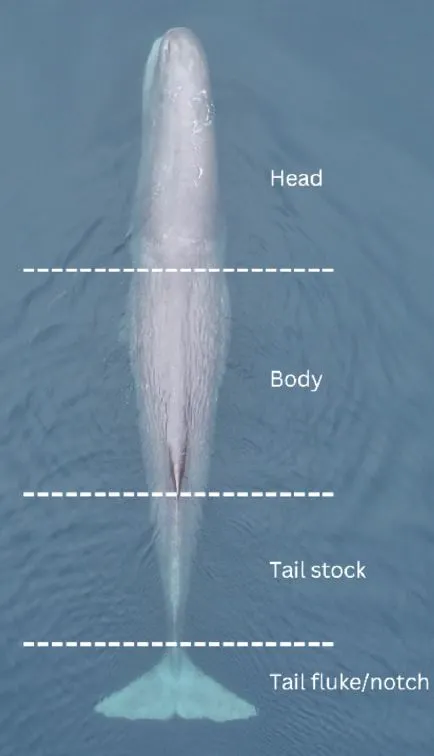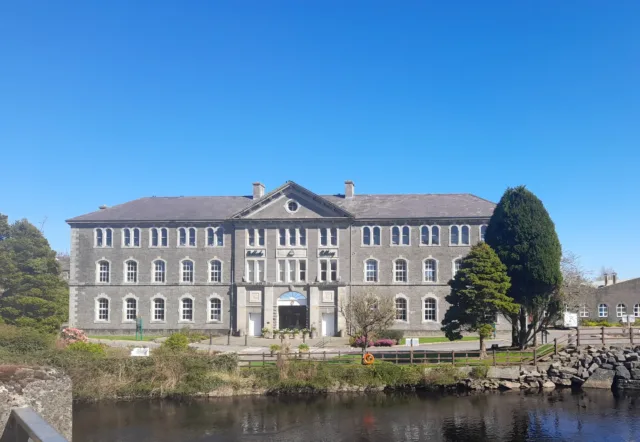ATU Researcher Develops New Technique to Identify Individual Sperm Whales Using Aerial Photographs
A new technique to identify sperm whales using aerial photographs has been developed by ATU PhD student Seán O’Callaghan, the first time this method has been used for photo-identification. The exciting new research was recently published in “Aquatic Mammals”, the world’s oldest peer-reviewed marine mammal journal.

A new technique to identify sperm whales using aerial photographs has been developed by ATU PhD student Seán O’Callaghan, the first time this method has been used for photo-identification. The exciting new research was recently published in “Aquatic Mammals”, the world’s oldest peer-reviewed marine mammal journal.
Seán, whose work is supervised by ATU Scientists Dr Joanne O’Brien and Dr Martin Gammell of the Marine and Freshwater Research Centre (MFRC), ATU Galway and co-supervised by Dr Rui Prieto, Institute of Marine Sciences – OKEANOS, University of the Azores, Horta, Portugal, says photo-identification is an incredibly important cetacean research tool to monitor individuals within populations or across migratory movements: “It was first developed in the 1980’s on sperm whales using the tail fluke and dorsal fin when distinguishable markings were present. Over the past decade there has been a rapid development of domestically available (and more affordable) drones that can be bought off the shelf. This has led to this piece of equipment becoming a stable tool in the field for many researchers for a variety of uses.
The paper describes a new method to use aerial images of sperm whales for the purpose of photo-identification using available markings along the dorsal surface of individuals.
The head, back and tail fluke from an overhead perspective were used to differentiate between over 300 individual whales off Norway, Scotland, Ireland and the Azores between 2017 and 2024”.
Data was collected in collaboration with researchers and whale watching companies who allowed Seán to gather data during trips or during dedicated research trips in Norway with Whale2Sea and in the Azores with Pico’s de Aventura and Terra Azul in addition to chartered trips from Azores Boat Adventures and Azorean Seascape.
This PhD has been self-funded, with fees covered by an ATU scholarship, and support from the Marine Institute for some fieldwork and attendance at international conferences to share results from this study and other outputs from Seán’s PhD on this iconic species.
Aerial photo-identification is one of the techniques that has been developed over the course of this PhD to contribute back to the conservation of the species and share such results with the wider scientific community and general public. It complements the existing photo-identification technique from photographs, taken by boat normally, while allowing additional opportunities to gather additional sperm whale information like measurement estimates and behavioural data.
One of Seán’s supervisors, Dr Joanne O’Brien, Marine Scientist, ATU Galway, says: “Sperm whales are difficult to study in Irish waters because they are so far from shore. Sean has been following their migration routes to Norway and the Azores in order to carry out this research.”
Co-supervisor Dr Martin Gammell, Behavioural Ecologist, ATU Galway, says: “The novel photo-identification technique that Seán has developed in this study is an important contribution to Sperm whale conservation.”
Collaboration has been key to the success of this project to date with companies and research groups backing Seán internationally to work with them in sub-Arctic Norway and subtropical Azores. In the north mature male whales are present while in the south females and young whales remain on nursery grounds year-round, so working in both locations and in between these places has allowed Seán to build a comprehensive dataset to assess the species size structure from.
Aerial photo-identification has developed out of necessity to determine how many whales were flown over and to determine if whales were recaptured in different years to gauge individual growth rates, something we know little about.
This new technique should provide sperm whale researchers with an added toolkit to maximise the potential to monitor this species long term with the use of aerial photographs.
- The study develops a novel technique to identify individual sperm whales using the photo-identification technique with aerial images
- It was developed out of a need to know how many whales were flown over (along with recaptured whales) while doing fieldwork for measurement estimation work.
- It complements the typical photo-identification of the species using the tail fluke when they dive or dorsal fin (if distinctive) while at the surface.
- It allows for calves (who don’t typically tail fluke) and whales with undistinctive tail flukes to potentially be identified.
- Data was collected off the Azores, Ireland, Scotland and Norway between subtropical to sub-Arctic waters in the Northeast Atlantic.
- Whale watching companies Whale2Sea (Norway), Picos de Aventura, Terra Azul, Azores Boat Adventures and Azorean Seascape tours supported the project along with the Marine Institutes travel grant.
Read Seán O’Callaghan’s article here and profile here
ResearchGate: https://www.researchgate.net/profile/Sean-Ocallaghan?ev=hdr_xprf
And ORCID: https://orcid.org/0000-0002-9751-0255
![Map, Andenes, Norway 69.422766, 15.727029 [Unmarked map study area_27-03-2025 (1)]](https://www.atu.ie/app/uploads/2025/04/Unmarked-map-study-area_27-03-2025-1-888x1024.webp)





